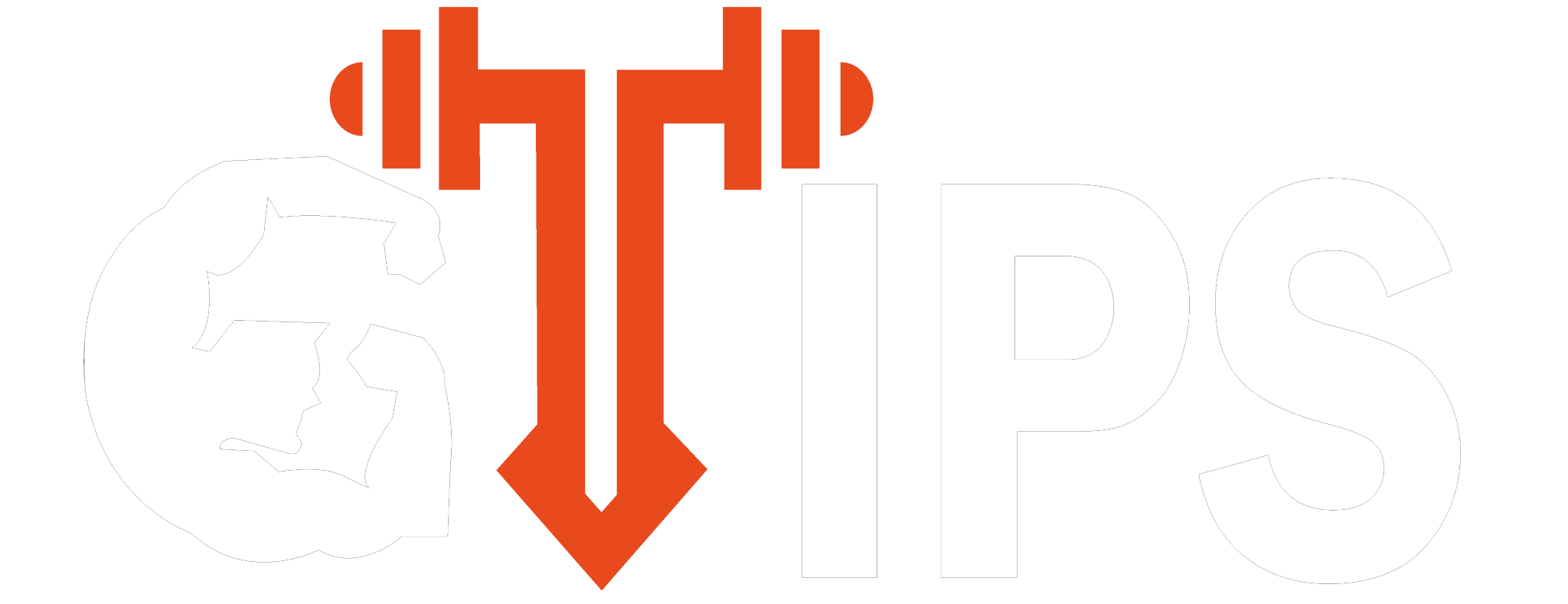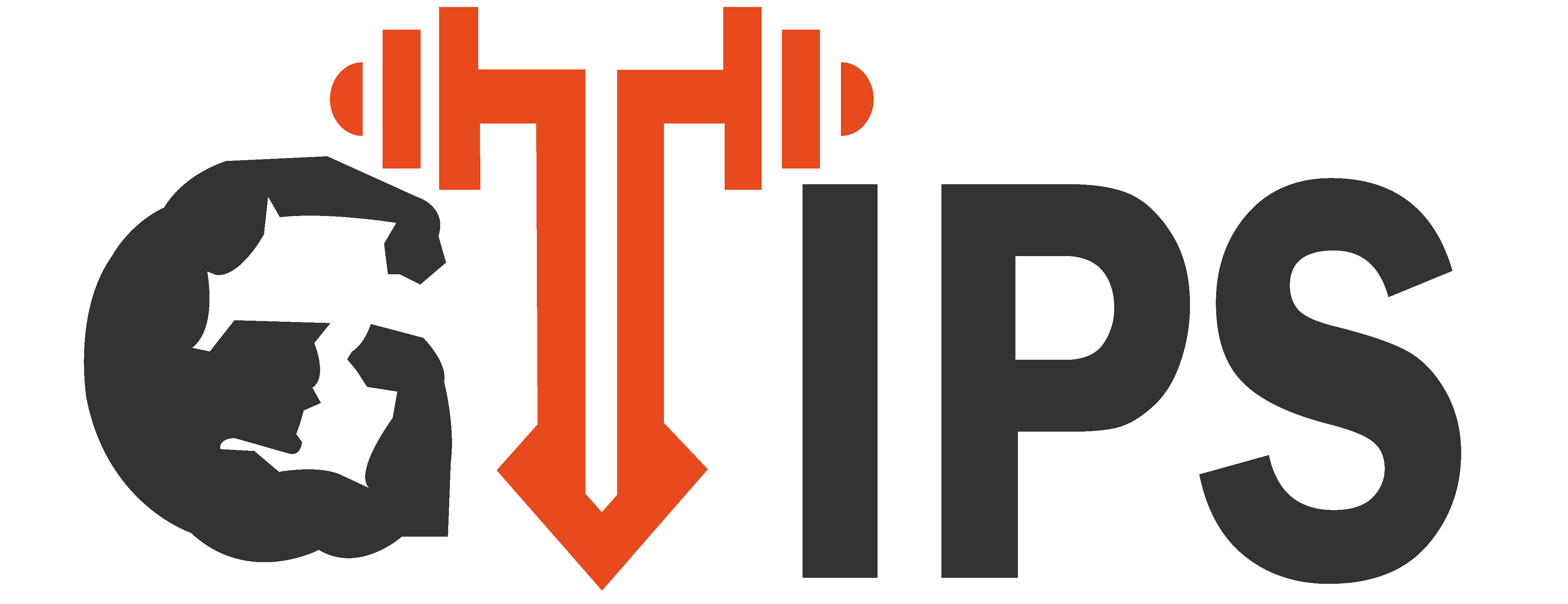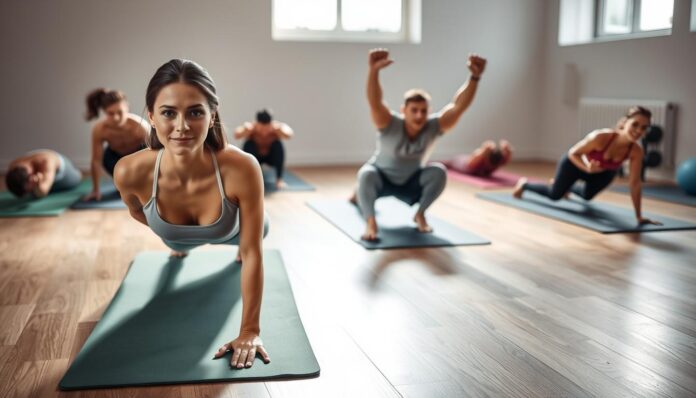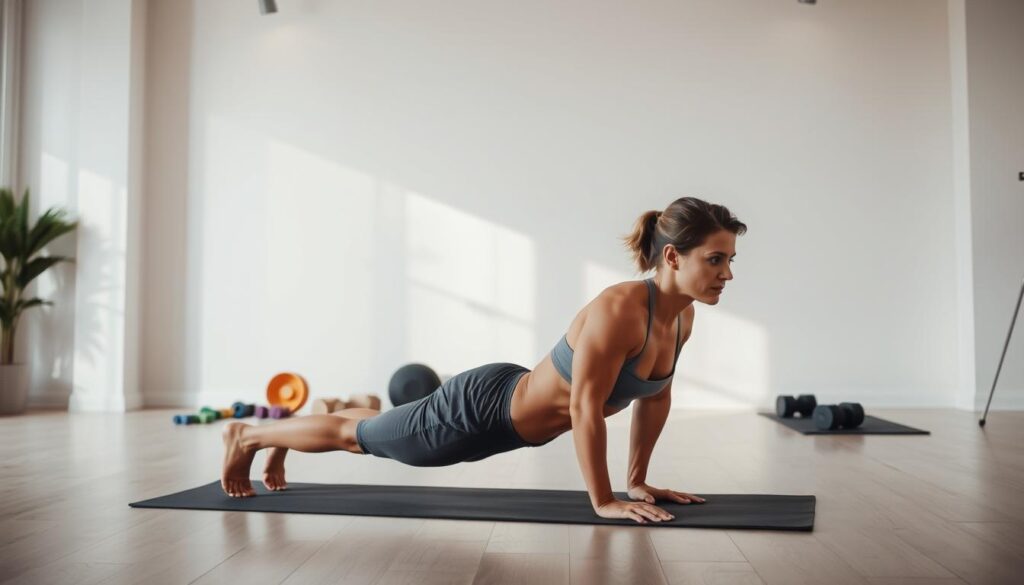Ever wondered what makes some people have amazing abs? It’s often their core strength. Core exercises are key for a toned midsection and better overall fitness. Starting your core workout journey is exciting, and knowing why these exercises are important will keep you motivated.
This article is your guide to beginner core workouts. It offers effective exercises for those just starting. You’ll learn how a strong core can change how you move and feel every day.
Key Takeaways
- Core exercises are vital for building strength and stability.
- A strong core improves your fitness and physical performance.
- Beginner core workouts are easy to add to any fitness plan.
- Basic core exercises prevent injuries and improve posture.
- Starting a core workout routine is the first step to reaching your fitness goals.
Introduction to Core Strengthening
The core strengthening introduction is about a key part of fitness. It includes the abdominal, back muscles, and pelvic area. Knowing the basics of core exercises is essential for good training and physical performance.
A strong core is vital for keeping your body stable during movements and activities. It helps you stay balanced and move smoothly in daily tasks. This is important for both athletes and regular people. You can find beginner routines that fit your daily life in this informative guide.
Adding core exercises to your fitness routine boosts your health and well-being. A strong core helps you do many physical activities better and lowers injury risks. As you get better, having a solid core becomes even more important for your workouts.
Understanding the Importance of Core Exercises
Building a strong core is key for better health and physical skills. Core exercises help improve posture, balance, and stability. These benefits lower the risk of injuries in sports and daily activities.
Benefits of a Strong Core
Core exercises offer more than just looks. They help your body stay aligned, making daily tasks and workouts easier. Athletes also see better performance thanks to a strong core. This boosts confidence in how they move.
Connecting Core Strength to Overall Fitness
Core strength is linked to overall fitness. Good core workouts improve your ability to do exercises like squats and deadlifts. These movements get better with a strong core.
Adding core exercises to your routine can also boost heart health, flexibility, and endurance. This shows how core strength is essential for a strong fitness journey.
Core Exercises for Beginners
Starting with beginner core workouts opens up new ways to boost strength and stability. You’ll see your core strength, endurance, and overall performance get better over time. At first, these workouts might push your muscles hard. But with regular practice, you’ll see big improvements soon.
What to Expect from Beginner Core Workouts
Beginner core workouts are made to help you get started right. You’ll start to see your core stability grow through simple movements. You’ll also notice better balance and coordination, which are key for many activities.
As your core gets stronger, you’ll see your posture improve too. You’ll find the exercises get a bit harder as you get stronger. Knowing what to expect can keep you motivated to reach your goals.
Your Essential Warm-Up Routine
A good warm-up is key to avoiding injuries and getting the most out of your workout. To get your body ready, try these dynamic stretches and moves:
- Torso twists: Stand with feet shoulder-width apart and twist your upper body side to side.
- Arm circles: Extend your arms and make circles to mobilize your shoulders.
- Leg swings: Swing your legs forward and backward to loosen up your hips.
- Deep breathing: Engage your core muscles while taking deep breaths to prepare them for action.
This warm-up routine does more than just get you moving. It activates your core muscles and gets your blood flowing. This ensures you’re ready for a great workout.
Simple Core Exercises to Start With
Starting to strengthen your midsection is easier than you think. Simple exercises like the pelvic tilt and toe tap are great for beginners. They help you get comfortable with core movements.
The pelvic tilt is easy. Just lie on your back with your knees bent. Press your lower back into the floor by tilting your pelvis upward. This exercise works your core muscles well.
The toe tap is also helpful. Lie on your back, lift your legs to a 90-degree angle, and lower them one at a time. It works your abs and improves coordination and muscle control.
Once you get the hang of these exercises, try adding more routines. You can find beginner workouts here.
Abdominal Crunch: A Classic Core Workout
The abdominal crunch is a key exercise for the core muscles. It’s a must for beginners. Learning the right way to do it is important to avoid injuries and get the most benefits. It helps strengthen your abs and improves your stability.
Proper Technique for Maximum Benefit
To do the abdominal crunch right, follow these steps:
- Lie on your back on a mat with your knees bent, feet flat on the floor.
- Place your hands behind your head, ensuring your elbows are wide and not touching your head.
- Engage your core by pulling your belly button towards your spine.
- Slowly lift your shoulders off the ground, curling your torso towards your knees while keeping your lower back pressed into the mat.
- Hold at the top of the movement for a second before lowering back down with control.
This classic core workout works well when done correctly. It targets your core muscles effectively, helping you build strength in your abdominal area.
Common Mistakes to Avoid
Many beginners struggle with the right form, leading to poor results or discomfort. To get the most from your beginner ab exercises, watch out for these common mistakes:
- Do not pull on your neck or head. This can lead to strain and discomfort.
- Avoid lifting your entire torso off the ground; focus on curling your shoulders upwards.
- Keep your lower back pressed into the mat to prevent any arching, which could lead to injury.
By avoiding these mistakes, you can improve your technique. This will help you get the most out of this important abdominal exercise. Strengthening your core properly will also prepare you for more challenging workouts later on.
Bridge Exercise: Strengthening Your Lower Back
The bridge exercise is key for a strong lower back. It’s a must-have in your workout plan. It works your glutes and core, boosting stability and muscle power. It’s perfect for beginners wanting to build their core strength.
- Lie on your back with knees bent and feet flat on the floor, hip-width apart.
- Place your arms at your sides, palms facing down.
- Engage your core by tightening your abdominal muscles.
- Push through your heels to lift your hips off the ground.
- Hold the position for a few seconds, ensuring your body forms a straight line from shoulders to knees.
- Lower your hips back to the ground and repeat.
There are many ways to do the bridge exercise, fitting all fitness levels. Beginners start with the basic bridge. More advanced folks can try single-leg raises or use a stability ball for a challenge. These changes make the workout more effective and cover all bases for beginners.
Doing the bridge exercise regularly helps build a strong lower back. It’s a great base for more core exercises. Adding it to your routine means better health and lasting benefits.
Single-Leg Abdominal Press: Focusing on Balance
The single-leg abdominal press is a great way to boost your core strength and balance. It makes you stabilize your body while working your abs. Follow these steps to get the hang of it and enjoy its benefits.
How to Perform the Single-Leg Abdominal Press
To do the single-leg abdominal press, follow these steps:
- Start by lying on your back with your knees bent and feet flat.
- Then, lift one leg off the ground, keeping it at a 90-degree angle.
- Next, pull your belly button towards your spine to engage your core and balance.
- With your hands behind your head, slowly lift your upper body, pressing your back to the mat.
- At the same time, extend your same-side arm towards your leg while keeping your balance.
- Hold this for a moment, keeping your core tight, then go back to the start.
- Do this for the number of reps you want, then switch to the other leg.
Benefits of Choosing Variations
Trying different versions of the single-leg abdominal press has many benefits. These include:
- Working different muscles to boost your core strength.
- Getting better at staying stable as you try new versions.
- Improving coordination and functional strength for everyday tasks.
- Being a good next step for beginners, making it perfect for all levels.
Building on Basics: Double-Leg Abdominal Press
The double-leg abdominal press is a key step up from the single-leg version. It greatly boosts your core strength. This exercise is a key part of your core workout, focusing on your abs and improving stability.
Both legs work together in this exercise. This helps isolate your core and enhances muscle coordination.
To do the double-leg abdominal press, follow these steps:
- Lie on your back with your knees bent at a 90-degree angle.
- Place your hands behind your head or across your chest.
- As you exhale, slowly extend both legs out while maintaining a slight lift in your upper body.
- Hold this position for a moment, ensuring your core remains engaged.
- Inhale as you return to the starting position.
This exercise maximizes your abdominal engagement and improves muscle control. Adding the double-leg abdominal press to your routine strengthens your core. It also boosts your confidence in doing more complex movements.
Incorporating Plank Variations for Core Stability
Plank exercises are key for building a strong core. By trying different plank variations, you can make your workouts better fit your level. This helps improve your strength and posture. Learning how to do a modified plank routine is important for safe and effective core workouts.
Creating a Modified Plank Routine
Starting a modified plank routine is great for beginners. Here are some good options:
- Modified Plank: Start on your hands and knees, keeping your body straight from your head to your knees. This variation is ideal for beginners to develop strength without straining.
- Forearm Plank: Next, try a forearm plank. Place your forearms on the ground, ensuring your elbows are aligned with your shoulders while maintaining a straight line from your head to your feet.
- Side Plank: This variation challenges your lateral core muscles. Rest on one forearm and stack your feet, holding your body in a straight line. Use your free hand to stabilize yourself on your hip or reach upwards.
Adding these plank variations to your routine helps you progress in your core workouts. As you get stronger, you can try harder versions to keep your workouts interesting and effective.
Integrating Pilates-Inspired Core Exercises
Adding Pilates to your workout can make it fresh and focus on key muscles. Pilates for beginners targets deep abdominal muscles, focusing on control and precision. These moves balance strength and flexibility, boosting your fitness and mental clarity.
Start with exercises like the hundred, roll-up, and single-leg stretch. These not only tone but also improve your connection between body and mind. Once you get the hang of them, try different versions to keep things interesting and challenging.
Using Pilates in your fitness routine adds a mindful twist to your workouts. It emphasizes breath control and alignment, laying a solid base for your fitness journey.
Creating Your Own Core Workout Routine for Beginners
Creating your own core workout routine is an exciting step towards fitness goals. A good beginner core workout targets all core areas and is easy to follow. This section provides sample workout guidance to help you start your core fitness plan.
Sample Beginner Core Workout Routine
| Exercise | Repetitions | Sets | Rest (minutes) |
|---|---|---|---|
| Abdominal Crunch | 15 | 3 | 1 |
| Bridge | 10 | 3 | 1 |
| Single-Leg Abdominal Press | 10 (each leg) | 3 | 1 |
| Plank | 20-30 seconds | 3 | 1 |
| Double-Leg Abdominal Press | 10 | 3 | 1 |
Adjust the reps and sets to fit your fitness level. Focus on proper form and control in each exercise. This routine helps you build a consistent workout habit, improving your core strength and overall fitness.
Conclusion
Building a strong, toned midsection is more than just looking good. It’s about getting fit overall. Beginner workouts show us the power of planks, bridges, and crunches. These exercises are the first step to a stronger core.
Starting your fitness journey? A balanced diet and regular core exercises are key. Doing these exercises 2-3 times a week can really show off your muscles. For more tips, check out this useful guide that matches your goals.
Having a good core routine does more than just make you look good. It also makes your body stronger and more stable. So, take on the challenge, stay committed, and enjoy the journey to a healthier you.
FAQ
What is the “core,” and why is it important?
The core includes muscles around your abdomen, back, and pelvis. Having a strong core helps you maintain good posture and balance. It also prevents injuries and boosts your overall fitness.
How can core exercises benefit my overall health?
Core exercises improve your physical look and performance in activities. They help with lifting, bending, and twisting. This makes you more fit and healthy overall.
I’m a beginner—what should I expect from core workouts?
Beginners will see their strength and endurance grow slowly. Start with simple exercises. These will lay a solid foundation for more challenging movements later.
What are some easy core workouts I can start with?
Start with pelvic tilts, toe taps, and abdominal crunches. These exercises work the basic muscles. They’re easy for anyone to do, no matter their experience.
Should I warm up before doing core exercises?
Yes, warming up is key to avoiding injuries and getting the most out of your workout. Use dynamic stretches and breathing exercises to get your core ready.
How do I perform a proper abdominal crunch?
To do an abdominal crunch right, lie on your back with knees bent. Engage your core and lift your shoulders. Keep your neck relaxed and focus on using your abs.
Can I include variations in my core workouts?
Absolutely! Mixing up your exercises keeps your workouts interesting and targets different muscles. Try single-leg and double-leg presses, or different plank styles to add variety.
How can I design my own core workout routine?
To make your own routine, start with a plan that includes beginner-friendly exercises. Make sure it fits your fitness level and balances your core workout.
How often should I do core exercises?
Aim to do core exercises two to three times a week. This allows your muscles to recover and rebuild between workouts.





